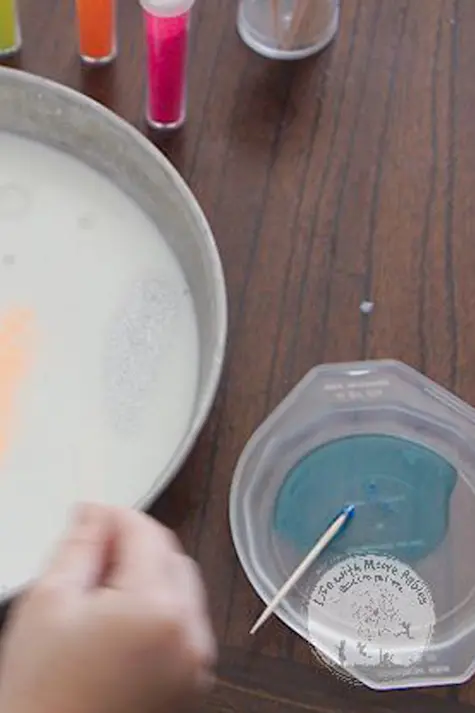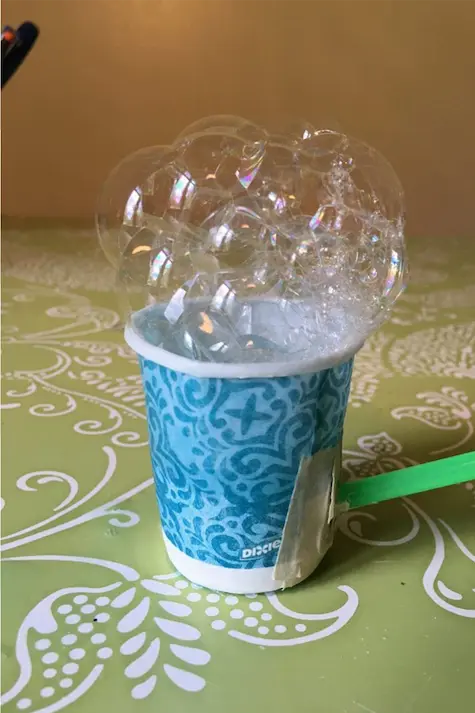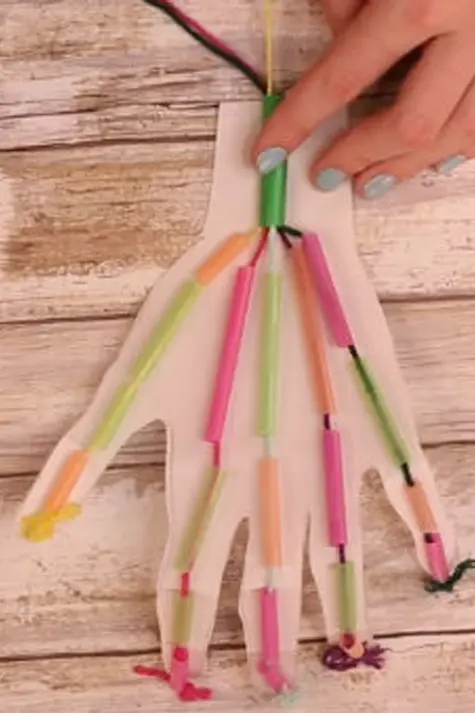settings
children
With Famly since
With so many EYFS science activities to choose from out there, it can be hard to find the right activities for your children and your early years setting.
You need activities that are open-ended enough to follow child interests, while still provoking fascination, curiosity and wonder about the big wide world.
That’s why we’ve scoured the internet to find the perfect EYFS science experiments for young children. These activities are particularly stimulating because they’re short, they provide a dramatic reaction, and the children are able to grow their understanding of the world by learning through play.
The activities are also designed to be cost-effective, drawing on common household items as the key ingredients. They’re also simple to demonstrate and perfectly safe under supervision.
Done right, these experiments should come with lots of discussion during the activity to help your children think about what’s happening, why it happens this way, and how it can help us. With any luck, the fascination children experience will also provoke plenty of questions and new interests which you can follow up on in your continuous provision to keep it child-focused.

1. Have fun with physics with this float-or-sink investigation.
Float or Sink by Happy Hooligans
This simple science experiment:
This classic experiment is a boat-ally interesting investigation into buoyancy, with just a few simple supplies. Bring out a tray of water and a mix of different items (some that you know will float and some that you know will sink). Hold up each item in turn and have the children share their ideas about whether the item will float or sink. Then pop it in the water and talk to the children about what's happening. Don't forget to introduce science vocabulary as you go.
To mix things up, why not try different liquids?
What you need:
- A bucket of water (preferably transparent)
- A variety of items, some of which may sink and which will float

2. Make collaborative chemical reactions with this magical milk science activity
Magic Dancing Milk by Mess For Less
This simple science activity:
Turn milk into dancing, colourful art! You’ll need a shallow dish, such as an empty pie dish or baking tray. Submerge the bottom by pouring room-temperature milk into it. Add a few blobs of food colouring (the children can do this part) and then hand each child a toothpick dipped in dish soap (washing-up liquid). Now watch the colours dance! Scientific concepts don't have to be complicated - what's happening is a chemical reaction, but easy science experiments like this one make it simple... and so much fun!
What you need:
- A shallow dish or tray (foil trays are fine)
- Food colouring
- Milk
- Toothpicks
- Dish soap

3. Grow to love learning with this bean-based science project
Growing Beans On Cotton Balls by The Imagination Tree
This easy science experiment:
As EYFS science experiments for kids come, this one couldn't be easier. However, while science activities with instant and dramatic effects are always a winner, this one will test the children’s patience (which can help to build focus and concentration later on)! All you will need is a few balls of cotton wool, five or six beans, a jar, and a little water for each child. Place the cotton balls in the jar, moistened, with the beans resting snuggly in the wettest parts and set them somewhere with plenty of light.
Remind the children to check on their seeds every day and make sure the cotton wool is never dry. This teaches children simple scientific concepts such as plants needing water and light to grow.
After a few days, a sprout will emerge. Once there is a root, the children can carefully plant their delicate seedlings in the garden and marvel as it grows.
What you need:
- Cotton balls
- Dry beans
- A jar
- Water

4. Demonstrate capillary action with colourful celery in this STEM activity
Why Do Flowers Change Color in Food Colouring? by Go Science Girls
This colourful science activity:
Simple science activities don't come much more simple than this! You’ll need only the most basic supplies - three cups containing water with a different colour food dye in each, and some celery. Red, blue, and dark green food colouring usually gives the most visual effect. Add a celery stick or a white flower to each cup and wait for the change! The capillaries carry water up through the plant, clearly shown with the help of the food colouring - talk about real STEM activities!
What you need:
- 3 celery sticks or 3 white flowers
- 3 different shades of food colouring
- Jars with water

5.Water simple activity! A cool way to introduce the water cycle
Cloud In A Jar by Fun Learning For Kids
This simple science experiment:
Ok, it not the most accurate scientific method, but this easy experiment demonstrates very simply why it rains. Explaining that clouds are actually tiny droplets of moisture rather than solid, puffy, cushions can be a little challenging!
Using a glass of water to demonstrate “sky”, create a cloud to hover at the top by using shaving cream. Now, use a medicine dropper or a pipette to drip little droplets of food colouring into the cloud. Eventually, the food colouring will seep through the cloud to demonstrate rain.
What you need:
- A jar of water
- Blue food colouring
- Shaving cream (or shaving foam)
- A medicine dropper or pipette

6. Discover the rainbow with this explosive experiment
Rainbow Eruption by Learn, Play, Imagine
This colourful science activity:
A science experiment with simple ingredients and an impressive result is always a win when considering fun STEM activities. This is a twist on the traditional baking soda and vinegar experiment, where a 'volcano' is created by the chemical reaction between these two ingredients. Start by lining up a few paper cups, each with its own food colouring – red, yellow, green, blue and a mixture of red and blue (to make purple). Add a scoop of baking soda and then pour in a little vinegar. There you have it – it’s magic (or science)!
What you need:
- Paper cups
- Different shades of food colouring
- Baking soda
- Vinegar
The big ideas

7. The simple science of soap

Why We Use Soap by Life With More Babies
This Early Years science experiment:
Simple science concepts are all around us, even in daily routines like hand-washing. This easy science experiment demonstrates the cleaning power of soap and offers children a better understanding of why it’s so important. Place milk in a shallow dish, a few centimetres deep. Add a few splotches of fine glitter – you can use many colours or just one or two. Using a toothpick with soap on it, place the soap in the middle of the glitter and, like magic, the “germs” (the glitter) will disperse! This experiment demonstrates how soap cleans the germs from our hands.
What you need:
- Milk
- A shallow dish
- Fine glitter
- Toothpicks
- Soap

8. Discover a disco - a fun way to explore a chemical reaction
Dancing Worm Activity by Living Life And Learning
This simple science activity:
You’ll need a glass of warm tap water with three tbsp baking soda stirred in - this is your worm disco. You’ll also need a glass of white vinegar, gummy worms, and utensils like an empty glass, a spoon for stirring, and a knife or scissors. Carefully chop the gummy worms and add them to your glass of warm water with bicarb and stir again, then leave it to rest for 15 minutes.
After the allotted time, ask the first little scientist to take a gumy worm from the water and drop it into the glass of vinegar – there will be a dramatic pause before they start to dance around.
Top tip: tell the children that dancing worms no longer taste good – just in case there are any sneaky fingers.
What you need:
- Warm tap water
- 3 tbsp baking soda
- A glass of vinegar
- Gummy worms
- Empty glass
- Spoon

9. Calling all Early Years engineers: test this brilliant bubble machine!
Make a bubble machine by Engineering Emily
This fun science activity:
Hands on learning really is the best when it comes to simple science experiments. This is one of the easiest EYFS science experiments for you to prepare out of all the ones we’ve chosen. The paper cup bubble machine activity demonstrates how increasing air pressure in a container can have really cool effects. This experiment requires only the very basics- bendy straws, paper cups, duct tape, water, and dishwashing liquid or some other foaming liquid (like bubble bath). Place the straw through the cup somewhere near the bottom and use the duct tape to seal the hole. The soapy water should submerge the straw in the cup – and voila – it’s ready for blowing bubbles! This experiment is probably one for the older children only, as you don’t want a budding scientist to test sipping instead of blowing!
What you need:
- A bendy straw
- A paper cup
- Duct tape
- Water
- Dishwashing liquid or bubble bath

10. A real 'hands-on' engineering experiment to create a robot hand
This simple Early Years science activity:
No robot science kits needed here, just good old bendy straws and construction paper! This STEM activity is ideal for children from the age of three as it's a little more fiddly that some of the others. Trace a hand shape onto the construction paper and cut hand outline out with scissors - depending on ages and stages, the children can make their own. Cut the straws into smaller pieces and tape them onto the hand, and one onto the wrist (follow the picture for guidance). Next, cut five strands of string pieces long enough to thread all the way up each finger and knot one end of each piece. Thread one string through each finger and all the strings through the straw at the wrist. Next, have fun playing with the robot hand!
What you need:
- Paper
- Pens
- Straws
- String
Please note: here at Famly we love sharing creative activities for you to try with the children at your setting, but you know them best. Take the time to consider adaptions you might need to make so these activities are accessible and developmentally appropriate for the children you work with. Just as you ordinarily would, conduct risk assessments for your children and your setting before undertaking new activities, and ensure you and your staff are following your own health and safety guidelines.
Get 1000s of free EY activities
Want over 7,000 activities? See them in a free 14-day trial. Filter to target learning areas, age groups and topics, and get inspired.
Get started









